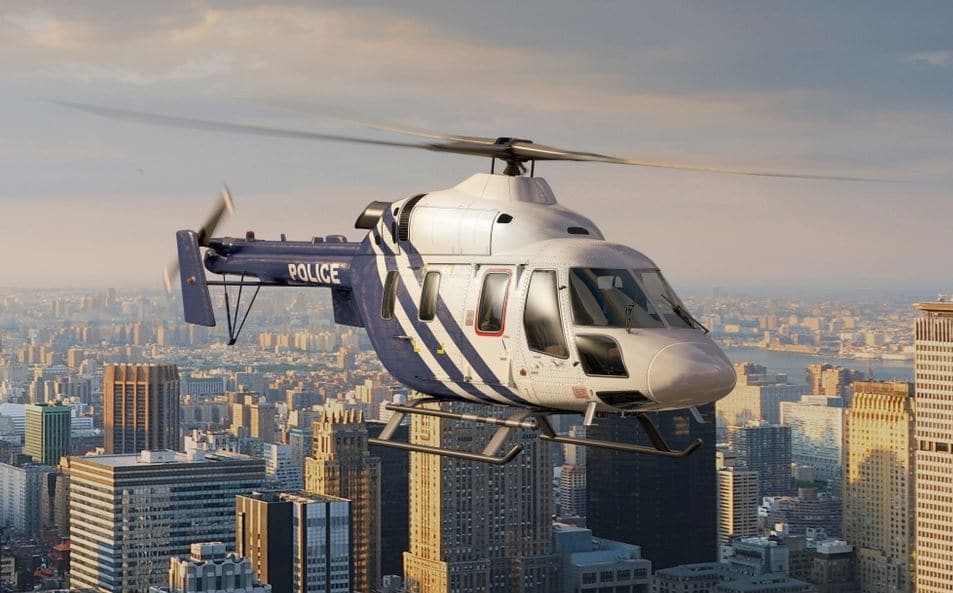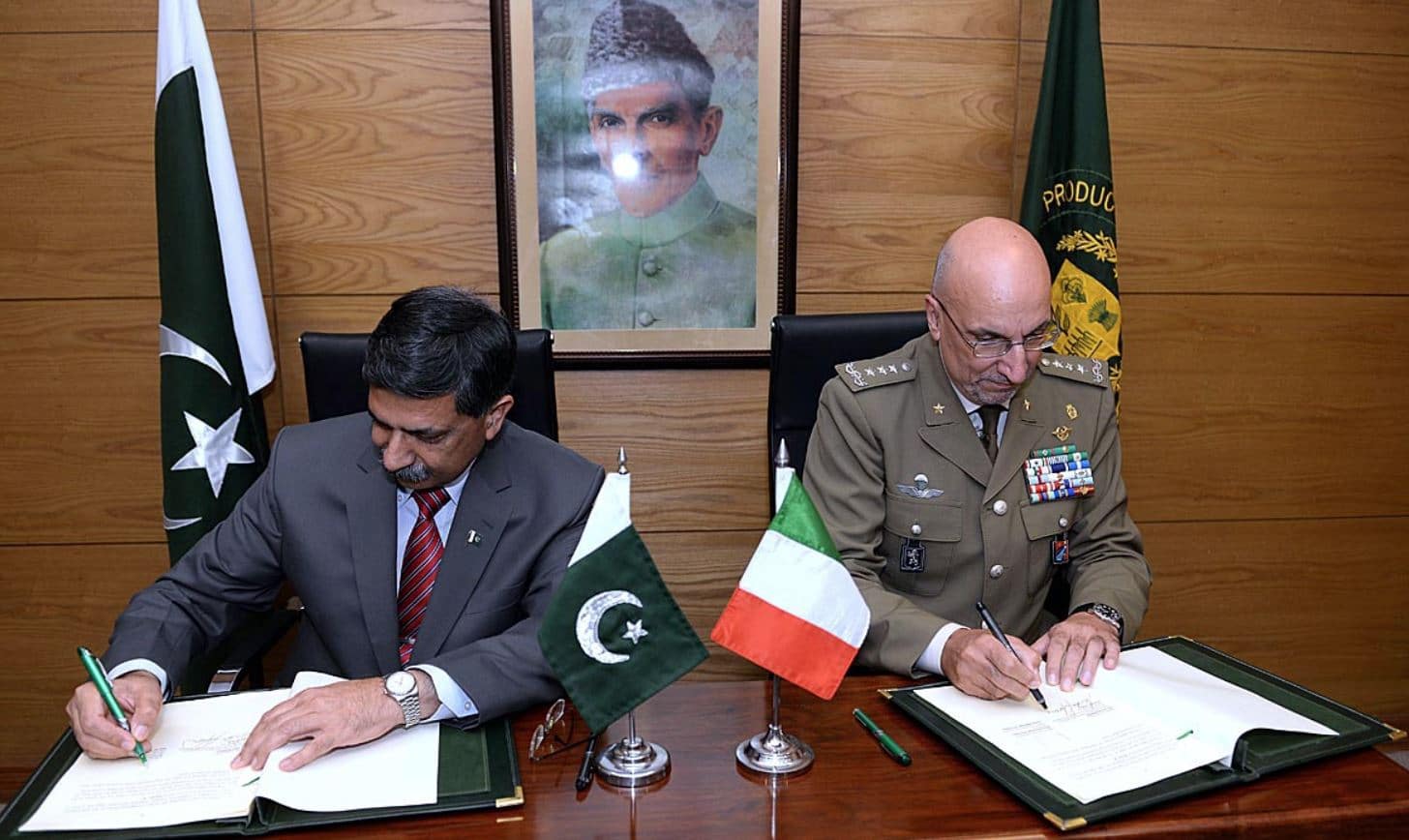2241Views 7Comments

Ansat lightweight helicopter undergoing promotional trials in Pakistan
Russian Helicopters Group is demonstrating the Kazan Helicopters Ansat lightweight helicopter in Pakistan as part of a promotional campaign to market the Ansat to prospective customers.
In its press release, Russian Helicopters states that its objective is to demonstrate the Ansat’s operability in high temperature conditions – i.e. +50° C. Russian Helicopters claims success would validate the Ansat’s capacity to operate in a temperature range of -45° to +50° C.
“Ansat is a very attractive helicopter due to its flight performance characteristics, including for customers from Asia and the Middle East,” said Alexander Shcherbinin, Russian Helicopters’ Deputy Chief Executive Officer for Marketing and Business Development, who added, “I hope that positive test results will turn the interest of potential buyers into a number of agreements.”
Upon competing the trials, Russian Helicopters will hold a conference in Islamabad for prospective clients in Pakistan. The company intends to discuss the Ansat’s competitive advantages.
The Ansat is a general-purpose utility helicopter available to military, civil services and commercial users. It has a maximum take-off weight (MTOW) of 3,600 kg and is powered by two Pratt and Whitney Canada PW207K turboshaft engines, each providing over 600 shp. Capable of ferrying up to eight passengers, the Ansat has a cruise speed of 220 km/h, ferry range of 515 km and operational ceiling of nearly 15,750 ft.
Notes & Comments:
It appears that Russian Helicopters is marketing the Ansat to the Pakistani market in general, not just the government and armed forces. However, the latter would be the largest potential market. Currently, the Pakistan Army operates the Airbus Helicopters H125M, while the Aerospatiale SA316 Alouette III is flown by the Army, Navy and Air Force. The Alouette III is seeing use as a search-and-rescue and utility platform, but since it is a legacy aircraft Pakistan could be examining potential future successors.
Pakistan’s Ministry of Interior could also be a potential customer, it has used helicopters to support its paramilitary and internal security mandate. In fact, the interior ministry finished returning the nine Bell Huey II utility helicopters it was given by the U.S. in 2002. The ministry is seeking new helicopters to take on the role left by the Huey IIs. However, though the Ansat could be positioned as an alternative, Pakistan already operates other utility helicopters – such as the Leonardo AW139 and Bell 412EP – that could also fill that gap, but by extending the existing logistics and maintenance infrastructure already in place.



7 Comments
by Violet
Ansat helicopters are one of the simplest helicopter solutions being built by Kazan helicopters of Russia. They are not military helicopters and are specific for use in civilian domain, by law enforcement agencies and firefighting departments. They are also used for VIP transport and domestic surveillance. It was offered to India as well but india favored the HAL Dhruv, which is currently used for transportation in both civilian and military domains. Infact one cannot rule out a substantial collaboration between HAL and Kazan for india’s Druv program as the striking similarity between Dhruv and Ansat’s airframe is just too hard to miss. The only difference being in the form of a vertical tail fin. Kazan makes bigger and better civilian helicopters with a wider functionality such as the Ka-62 and Ka-32A. Those platforms could have been on offer to foreign countries like Pakistan.
One thing of significance is the canadian engine 207 K used in the Ansat helicopters. That engine is manufactured by Pratt & Whitney Canada (PWC or P&WC) whose headquarters are based in Quebec, Canada. What is important to note here is that it is a division of the larger US-based Pratt & Whitney (P&W). PWC mostly manufactures engines for smaller aircraft while P&W’s US operations develop and manufacture larger engines. Though PWC receives a separate funding as it does its own research, development and marketing, it is nonetheless under the direct control of US arms export committee. Canada could on US insistence and pressure choke the supplies of engines to Pakistan.
by Mohamed Ahmed
HAL Dhruv is built with the assistance from German company Messerschmitt-Bölkow-Blohm. Initially, it was designated as Bo-108. It was developed into Eurocopter EC135.
by Mohamed Ahmed
Canada can’t suspend supply to Russian helicopters.
(1) everyone wants to do business.
(2) it is a civil helicopter.
by sami shahid
I see … very nice. Pakistan SSG can use these helicopters in Gilgit Baltistan & Siachen as well. Even the Pakistan disasters management authority can buy these helicopters.
by sami shahid
Oh I just got to know that these choppers are built to fly in hot weather conditions. So again, PDMA & Military can buy these helicopters. Even the Navy can.
by Violet
FYI…On October 2, the U.S. State Dept. imposed new sanctions on Russia specifically designed to punish Moscow for its actions in Ukraine and its interference in the 2016 U.S. election. The bill which was signed into law by Trump had an official deadline of October 1, which specifically targets over 3 dozen Russian defense and arms companies. The law authorizes U.S. government officials to punish (for example, using asset seizures) individuals and companies that “knowingly engage in a significant transaction” with people or Russian defense firms on the list.The restrictions imposed in the new law would officially go into effect on January 29, 2018. Until then the European and American companies have time to figure out alternatives in any joint collaboration they might have with the Russian counterparts.
The new list includes some of the best-known companies in Russia’s military-industrial complex, most of which are state-owned. It includes companies such as Rostec, a giant civil and military conglomerate that makes firearms, advanced optics, missiles, frigates etc. Rosoboronexport, which is also on the list and which manages the import and export of military equipment. Kalashnikov, the famed maker of assault rifles and automatic weapons Other companies such as Sukhoi, Tupolev, Kazan and Mikhoyan which are makers of the military and civilian aircraft and helicopters and the country’s biggest shipbuilding firm, United Shipbuilding Corporation has also not been spared. In total the State Department has listed 39 Russian companies and government organizations tied to the Russian defense and industry, and warned that anyone in the United States or elsewhere doing significant business with them could be hit with sanctions starting early next year. (i,e. January 29, 2018)
Some say it is a ploy employed by the US to reduce its competition in the int’l arms market, but whatever maybe the real reason behind this, one thing which anyone can safely assume is that US sanctions do have an impact and they are not mere threats. For example, after the Russian annexation of Crimea, France under immense pressure from EU and US cancelled the delivery of two mistral class amphibious ships to Russia back in 2014 even though all the payments from the Russian side had been made and the ships had already begun trials. The money was later refunded to Russia and France later put those mistral ships for sale to third countries.
I dont see a reason why it possibly also can’t happen with a US firm like Pratt and Whitney doing business with Russia.
by Rolexer
You are correct. It was not the Dhruv, it was Ka-226 T military helicopters which the Kazan helicopters of Russia is manufacturing in India under complete technology transfer. They are setting up a local manufacturing plant in Bangalore with collaboration with the HAL.
KA-226T has a wide range of applications and as per Kazan’s website, unlike Ansat, it is meant for military operations as well.